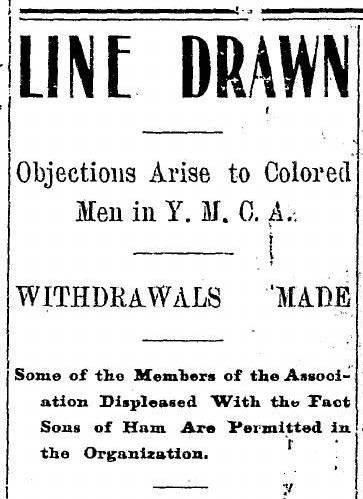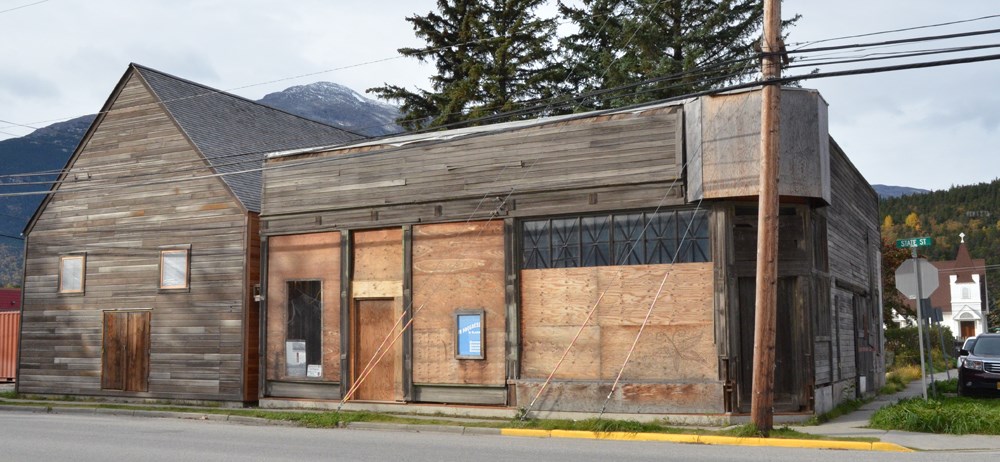|
Today, the National Park Service uses the terms African American and black. This webpage quotes historical documents that use other words to describe African American or black people. Because these words have been used in hurtful and discriminatory ways, readers may find these words offensive. We have included these primary sources with their original words because we feel the documents are crucial to conveying this Buffalo Soldiers story.

Alaska State Library Photo Collection Skagway-Churches-1 Alaska's First Y.M.C.A. Constructed in 1900, the Skagway Young Men's Christian Association (Y.M.C.A.) was the talk of the town when it first opened its doors. It was the first recreation club of its kind in the District of Alaska and quickly became popular. The Y.M.C.A. was a one-of-a-kind facility in the young town. It offered members a gym, baths, a handball court, a photo dark room, and a reading room. In its first month of operation the club gained 300 members reaching its maximum enrollment. Some of the last membership spaces went to 30 soldiers of Company L. Like the Y.M.C.A., Company L was another first for Skagway. While not the first Army unit sent to Alaska, Company L was uniquely comprised of 112 African American enlisted men. A Need for Recreation During the height of the gold rush Sam Steele of the Northwest Mounted Police referred to Skagway as "little better than hell on Earth." In 1899, Company L was sent to Skagway to "[m]aintain law and order on the Lynn Canal." By all accounts the soldiers carried out their duties with decorum and discipline. On their time off, the soldiers looked for ways to enjoy life in Skagway. Some men were active in the Baptist Church. Others frequented some of Skagway's plentiful saloons. Many of the soldiers played town baseball as part of a Company L team. For some the Y.M.C.A. seemed a welcome diversion. 
Daily Alaskan, August 16, 1900 Objections Arise Not everyone in Skagway welcomed the soldiers to the Y.M.C.A. creating a town controversy. Members who objected to the desegregated club began withdrawing their memberships. What must this have felt like to the men of Company L? To be discriminated against by the very people they were serving and protecting? This illustrates the complexities that these men had to balance. In many ways the men of Company L were waging battles on two fronts. They fought the lawlessness that plagued Skagway in their on duty time and they fought racial discrimination in their off duty time. Disgruntled citizens turned to the newspaper to voice their objections to Company L's membership. One woman said "…I do not care to go where I must meet colored men, I have Southern blood it is true, but I have the greatest respect for a colored person in his proper place." Some members reached out to the secretary of the Y.M.C.A. asking for segregation of the club. It is Secretary W.A. Reid's response that makes this event so significant. Mr. Reid responded that "[t]he Young Men's Christian Association knows no color line. It stands for young men regardless of nationality the world over." In 1900, the United States was only about thirty years past the American Civil War. Discriminatory Jim Crow laws were in force the southern United States. The Supreme Court had ruled that segregation was legal. It was a divisive time. Few large organizations like the Y.M.C.A took a definitive stance for racial equality. Secretary Reid explained "[i]t is unfortunate that such a feeling should exist but inasmuch as it does, nothing remains to be done but to permit those who entertain this feeling to withdraw." The Outcome The ultimate fate of the Y.M.C.A. is open for personal interpretation. The club shut its doors less than 18 months after the Company L controversy. Did the controversy of Buffalo Soldier membership doom the club? Would the club have closed regardless of their membership? By 1900 the Klondike Gold Rush and Skagway's boomtown days were over. People no longer flooded the shores of Skagway searching for riches. Many businesses went the same way as the Y.M.C.A. and had to close up shop due to the decline in the population. America's continuing struggle with discrimination and equality often appears in laws and major events. No corner of the country is immune. This tension is everywhere around us in daily life, too, both in the past and now, in the big events and the small. The Y.M.C.A. story captures opinions on race in early, everyday Skagway. And yet, Company L’s story parallels many modern experiences. How does your community react to change? 
NPS photo/K. Pontius Visit the Y.M.C.A. You can see the original Y.M.C.A gymnasium in Skagway. This building is currently being restored by the National Park Service. Check on its progress at the corner of 5th Ave and State Street. |
Last updated: July 27, 2021
